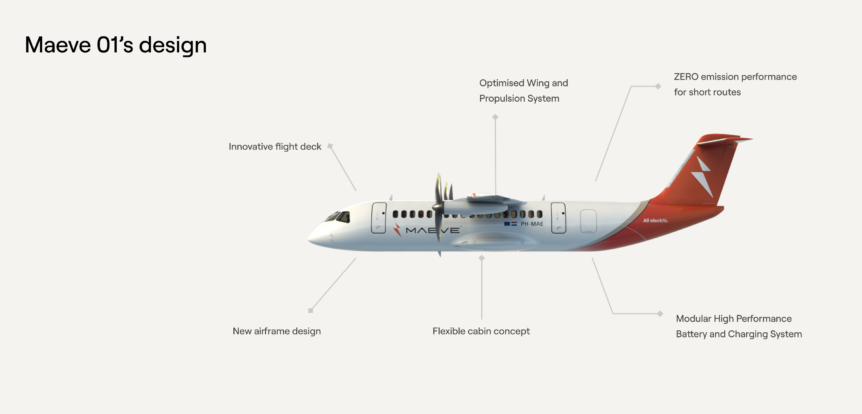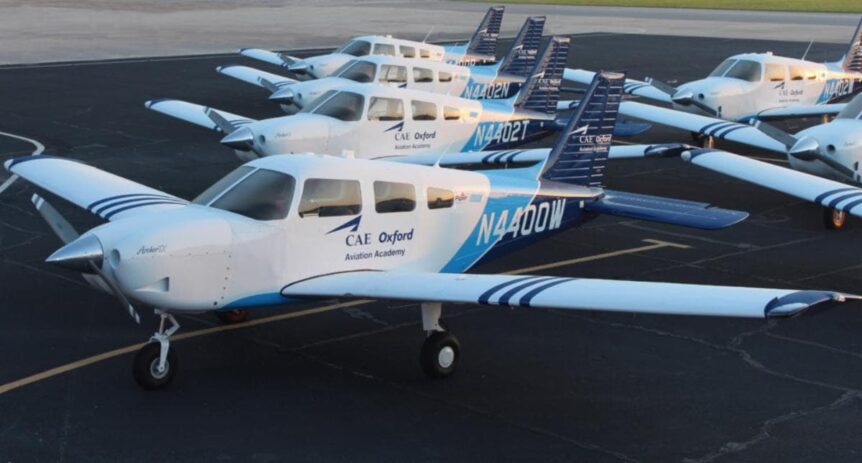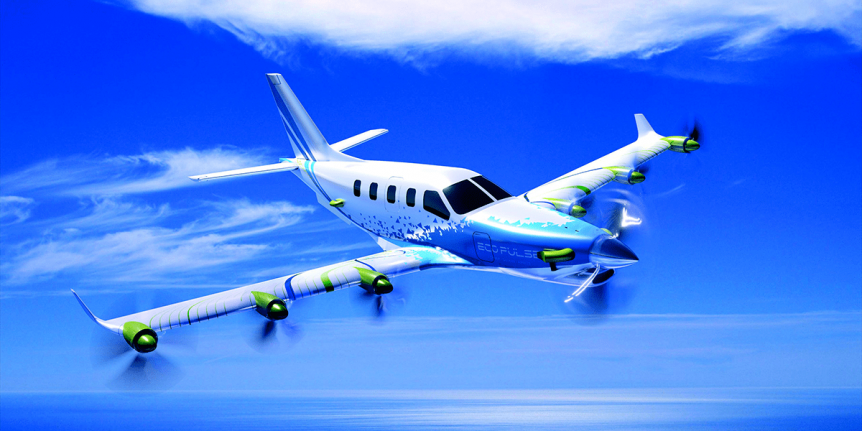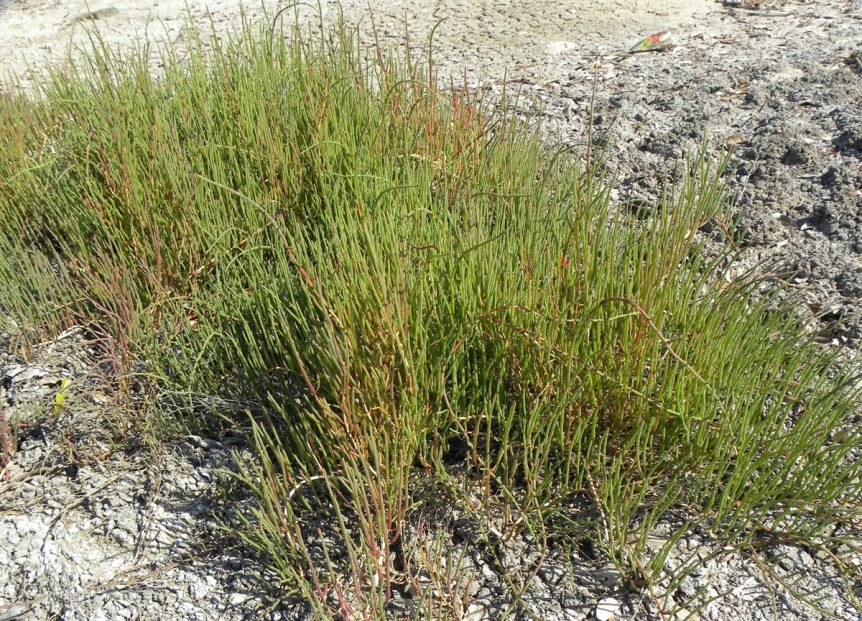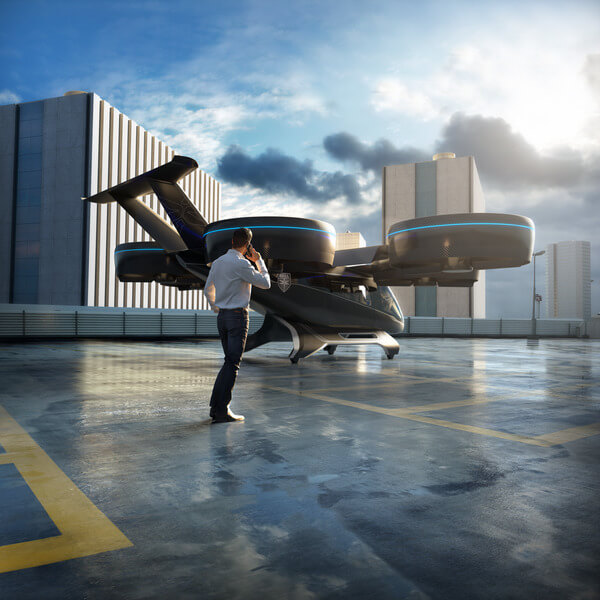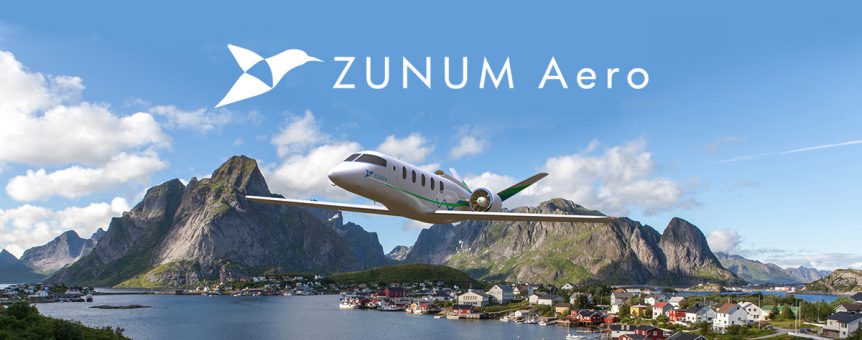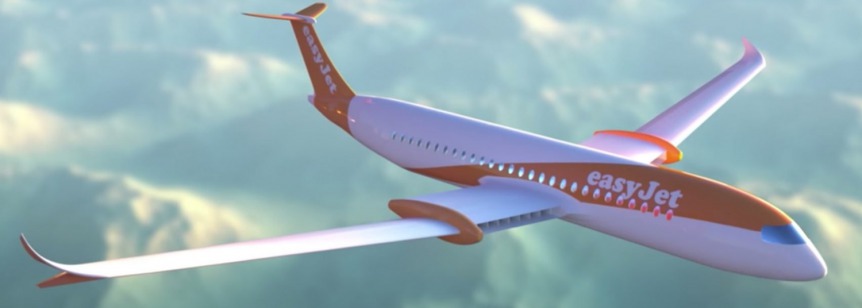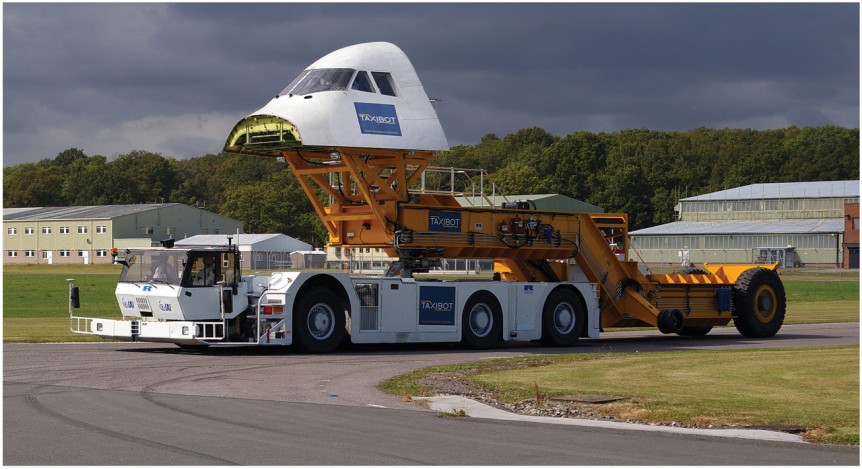Electric aircraft sales told the tale at this year’s Paris Air Show. European and American firms sold, or received letters of intent for, hundreds of craft, especially of interest in the electric, hydrogen, and hybrid categories we’ll discuss here. We will have subsequent entries on other craft of interest at the show and the commercial possibilities they encompass. Afrijet’s electric intentions French airframer Aura Aero signed a Memorandum of Understanding (MOU) for “multiple electric aircraft” at the Paris Air Show. This came a day after a Philippine-based Asian aerospace firm signed a Letter of Intent for three electric aircraft with Aura Aero. The 19-passenger, eight motor, ecologically friendly aircraft has an all-up weight of 8.6 tons and a hybrid cruising speed of 250 knots true air speed (288 mph). Its pressurized cabin can alternately carry 1,900 kilograms (4,180 pounds) of cargo with a total volume of 21.5 cubic meters (759.3 cubic feet). Total operating costs will run only one-tenth of …
Piper Archer Trainers to Go Electric
CAE, a Canadian high-tech company, H55, Safran, and Piper Aircraft have announced a joint venture to make the popular Piper Archer® trainer electric. With 28,000 Archers in service, a Supplemental Type Certificate (STC) would replace the current Lycoming IO-360 or Continental CD-155 Diesel engines with a Safran electric motor. The Players CAE CAE, started 75 years ago by a Canadian war hero, pledges itself to making the world a safer place. “Our vision is to be the worldwide partner of choice in civil aviation, defense and security, and healthcare by revolutionizing our customers’ training and critical operations with digitally immersive solutions to elevate safety, efficiency and readiness.” The organization runs large flight training programs and designs and operates banks of flight simulators. It plans on converting 60 percent of its Piper fleet worldwide to electric power. This is all part of a larger environmental and social program as reported in their Annual Activity and Corporate Social Responsibility Report. “To further …
What Has One Engine, Six Motors and Seven Propellers?
EcoPulse™, a collaboration by Airbus, Daher, and Safran is a fixed-wing distributed hybrid propulsion aircraft whose power system emulates many of the Urban Air Mobility vehicles that use an electric Vertical Take Off and Landing configuration. Safran, notable for its gas turbines, will supply the propulsion system (excluding batteries). The system consists of a turbogenerator (combined turbine and power generator), an electric power management system, and integrated electric thrusters (or e-Propellers) including electric motors and propellers faired neatly into the wings. EcoPulse partners claim the six small electric motors spread along the leading edge, while providing propulsion thrust, lead to a reduction of wing surface area – much of the wing gaining lift from the blown areas, lowered wingtip marginal vortices from the thrusters on the wing tips, and therefore lowered drag. Airbus will oversee aerodynamic optimization of the distributed propulsion system, installation of “high-energy density” batteries and their use to power the six electric motors. Daher will oversee component …
Fish and Fuel from Sunlight, Sand, and Salt Water
Ethiad Airways made the first commercial flight on fuel made from plants grown in saltwater by Khalifa University. Burning jet fuel made from halophyte plants grown in salt water and fertilized by the shrimp and fish living in the salt water enabled a flight from Abu Dhabi to Amsterdam on January 16. It was the first flight on pure biofuels, even though commercial airlines have made over 160,000 flights on blended fuels since 2011. Dennis Bushnell Predicted This Chief Scientist at NASA Langley Dennis Bushnell shared information on halophytes, plants that grow in salt water. He presented such ideas at a symposium your editor attended six years ago, and his vision is now being realized. He points out that 70 percent of all water in the world has a high saline content and over 40 percent of all lands are arid and cannot sustain conventional agriculture. You can see a slide show of his presentation on halophytes here. An Encompassing …
Bell Nexus Debuts at CES 2019
This year’s Consumer Electronics Show (CES) had over 4,500 exhibitors, and one major aircraft company showing off its Bell Nexus sky taxi and its Autonomous Pod Transport (APT). Fast Company reported that three major trends emerged: the thousands of devices that link to “virtual assistants” such as Alexa (28,000 apps), the introduction of a slew of Apple products, and the changes in transportation new technology will bring. Fast Company noted, “This long-term–and wildly futuristic–strategizing was on full display at CES. For starters, the Uber partner Bell showed off a second-stage concept of its flying car that both companies swear they will begin testing in 2020. (This has been on the docket for a while.) A full-scale model on the CES floor promised to fly five people at speeds reaching 150 mph. Of course, it didn’t actually fly, but it’s being taken seriously for an important reason: Bell is an established aircraft developer that makes the propulsion technology behind the V-22 Osprey (the crazy-expensive military helicopter …
Zunum Picks Safran Helicopter Engine for ZA10
Ashish Kumar, CEO of Zunum Aero, announced that his firm will partner with Safran Helicopter Engines to use that firm’s Ardiden 3Z engine as the powerplant for Zunum’s 10-passenger regional airliner. He lists the advantages this installation will provide. “Our ZA10 aircraft, under development for entry in the early 2020s, will be powered by dual power sources: propulsion batteries, and a Safran turboshaft in the 1,700 to 2,000 shaft horsepower (shp) Ardiden range. This new model, the Ardiden 3Z, will be used as a hybrid power source achieving demanding cost, efficiency and uptime requirements. It will be coupled with an electric generator, and the integrated turbo-generator will deliver 500 [kilowatts] of electric power to supplement propulsion batteries on key stages of flight and over long ranges. Upgrades such as advanced materials and integrated lifecycle management for hybrid service will dramatically reduce operating costs of the engine by extending the life of critical components.” Florent Chauvancy, Safran Helicopter Engines EVP OEM …
Jeff Engler’s Wright Aero Leaps Into Green Flight
Partnering with easyJet, a UK-based budget airline, to build an electric airliner capable of carrying 150 passengers on sub-two-hour flights, Wright Aero will substitute electrons for liquid fuel on one-fifth of EasyJet’s trips. Finding a ready collaborator in easyJet’s Carolyn McCall, Engler has a partner who is already making inroads into making jet flight cleaner. “’We can envisage a future without jet fuel and we are excited to be part of it. It is now more a matter of when not if a short haul electric plane will fly,’ said EasyJet CEO McCall,” in an interview with The Guardian. Engler added, in his latest Wright Weport: “First, the context is on Wednesday easyJet announced a partnership with us during their Innovation Day…. We could not be more excited! “(Note: if you have a second, would you mind posting the article on facebook/twitter? We’re hoping it reaches as many battery researchers’ eyes as possible! Thank you in advance!) “Second, our main takeaway …
Fuel Cells for Taxiing
What seemed like an easy transition a few years ago has been delayed by one developer. “Safran and Honeywell have delayed by two years the planned entry into service of their electric green taxiing system (EGTS), a device designed to enable an airplane to taxi with its engines shut down. Aviation International News (AIN) quoted a spokesperson as saying, “The team is still working on the program with a goal of certification in 2018 and entry into service shortly after.” The system uses motors on the main gear to enable taxiing under power. One of several competing systems, WheelTug, has motors on the nose gear only. Wheeltug uses a Boeing 737-800 as a testbed for the certification program. A United States company with manufacturing apparently based in Gibraltar, WheelTug claims orders for 985 systems by 22 airlines. Another system, TaxiBot, was developed by Israel Aerospace Industries in cooperation with France’s TLD, Germany’s LufthansaLEOS, the ground-handling component of the airline. The …
EAS IX: Airbus Looks to a Light Electric Future
Ken McKenzie, listed as Deputy Chairman of Airbus US, has served as Vice President for Airbus Customer Services and as Chief Operating Officer for Airbus Americas, Inc. This high-powered individual comes across as a relaxed, congenial soul, though, and led attendees at the ninth annual Electric Aircraft Symposium through an overview of developments in light electric aircraft to come from the aviation giant. The e-Fan is the most visible effort for Airbus’s electric aircraft work so far, but the company is intent on carrying out a full E-aircraft program as part of its commitment to the European Commission’s Flightpath 2050 program,. which bullet-points these important goals for the next 35 years: “1. In 2050 technologies and procedures available allow a 75% reduction in CO2 emissions per passenger kilometer to support the ATAG (Air Transport Action Group) target10 and a 90% reduction in NOx emissions. The perceived noise emission of flying aircraft is reduced by 65%. These are relative to the …
Electric Green Taxiing System Quietly Enters Paris Air Show
Honeywell and Safran have teamed up to create EGTS International, a company that makes Electric Green Taxiing Systems for airliners. Honeywell has extensive experience with auxiliary power systems and Safran makes “world-class landing gear systems.” Put them together and you have the self-powered landing gear which made its public debut at the Paris Air Show this week. Others have been working on the same type of system, but EGTS is the first to show the technology off at an air show. Besides making the display Airbus A320 one of the quietest airplanes moving across the tarmac at the show, the system could save airlines up to four percent per flight on fuel burn. As the EGTS web site explains, “Because an aircraft’s main engines are optimized for flying rather than taxiing, they burn a disproportionate amount of fuel during ground operations. With a short- or medium-range aircraft spending up to 2.5 hours of its time on taxiways every day, …
- Page 1 of 2
- 1
- 2

